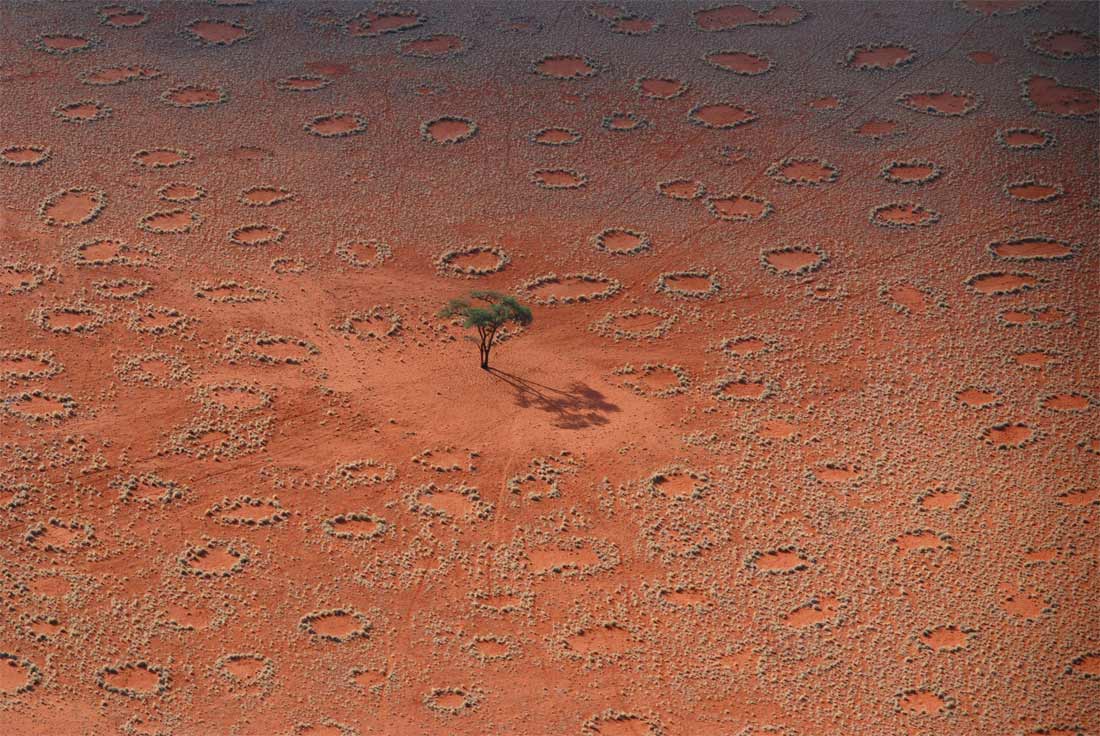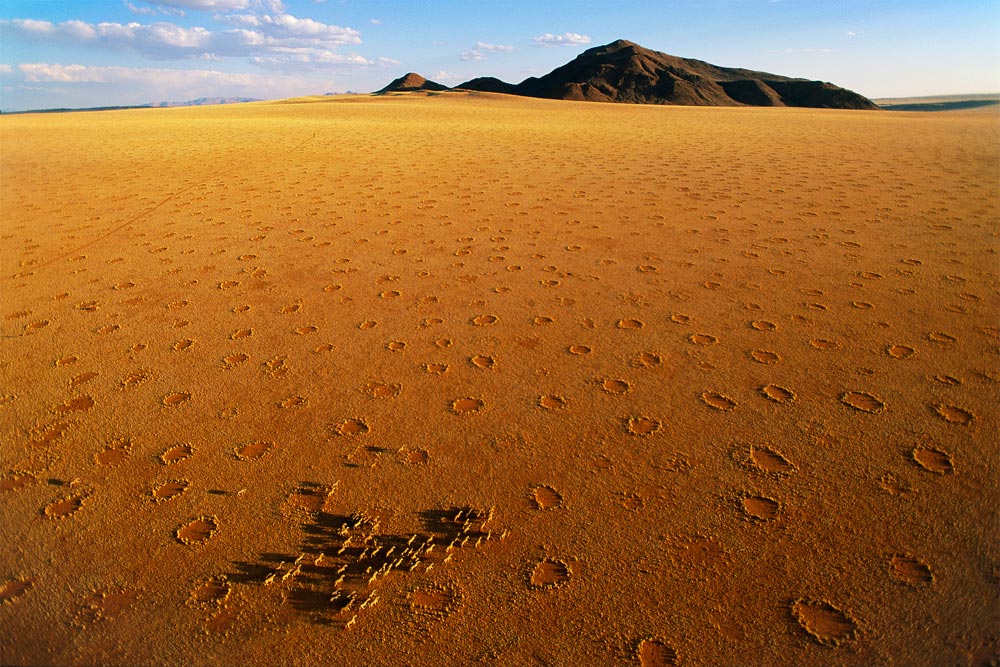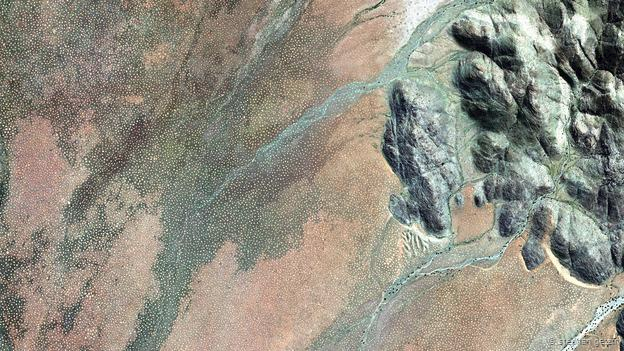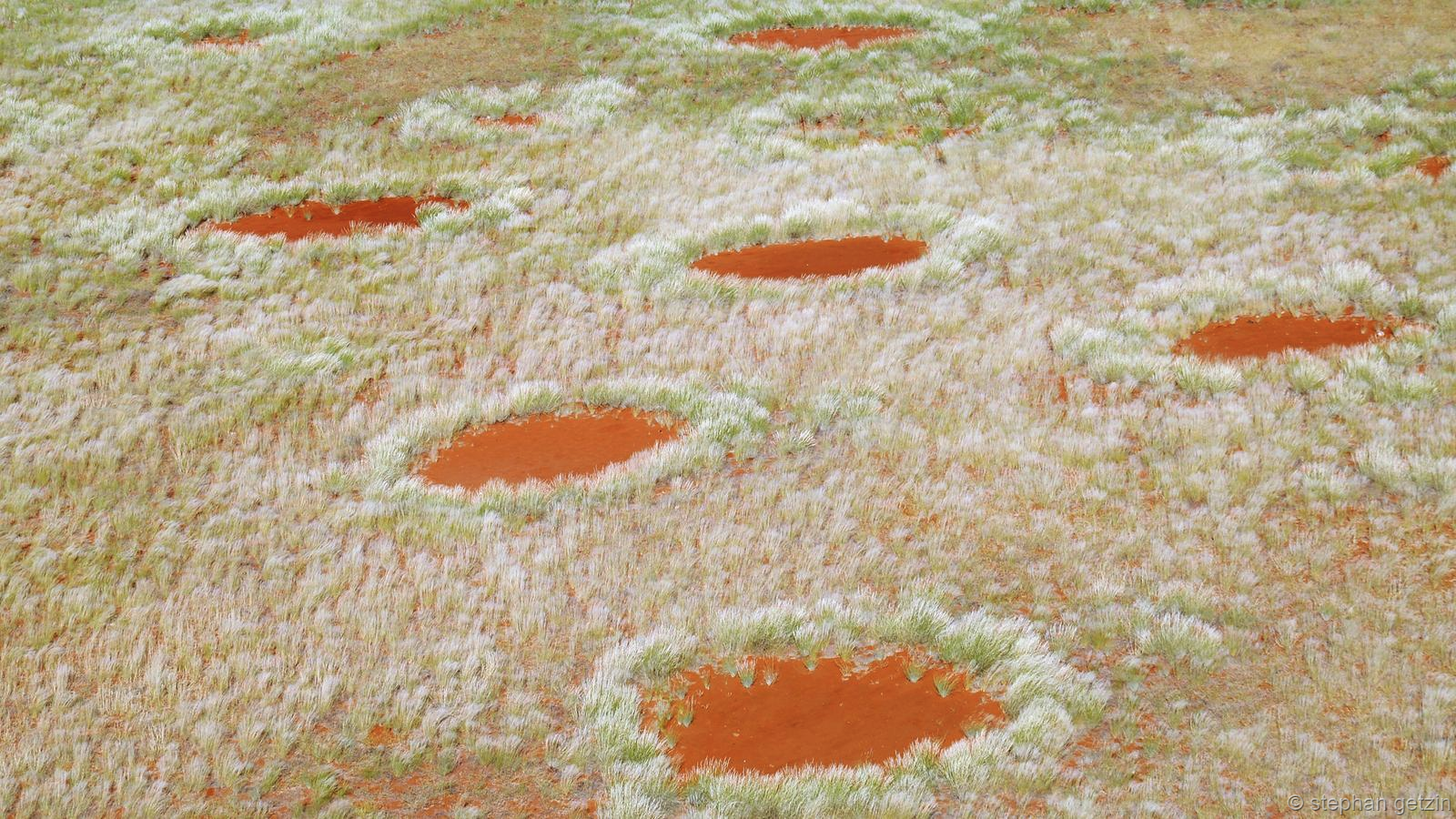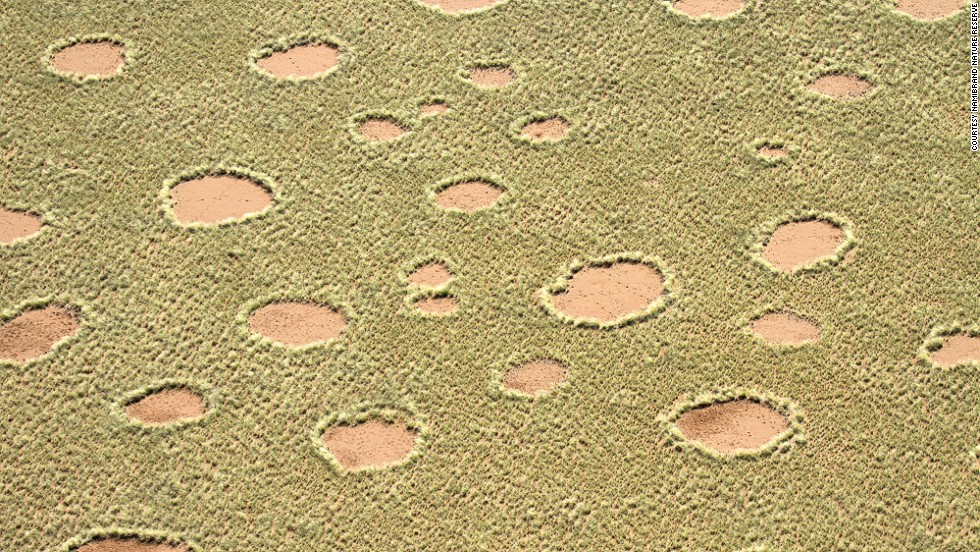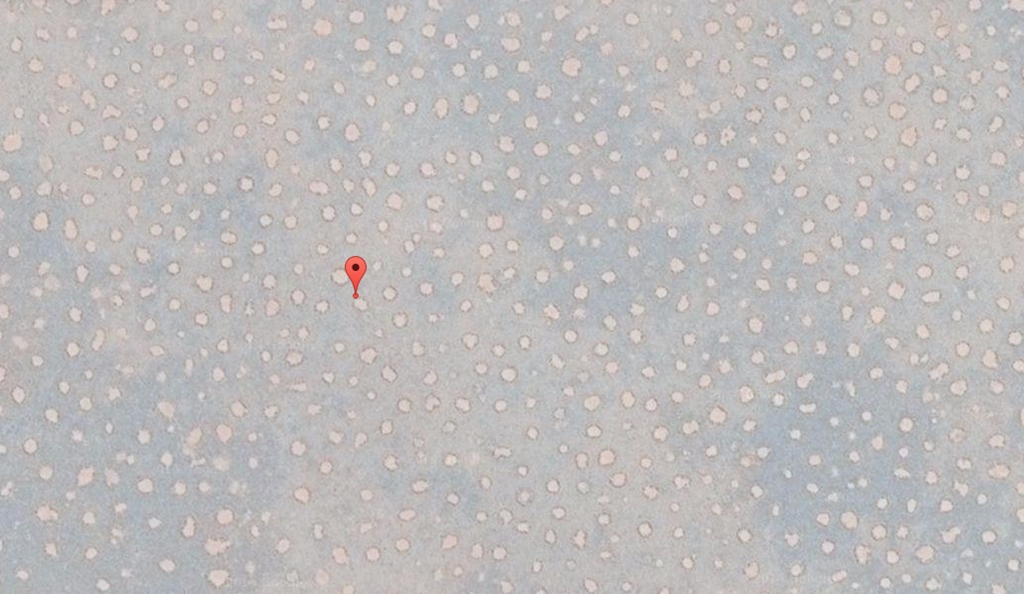Mysterious Fairy Circles In African Deserts
You may have heard about the fungus-based “fairy rings” that spring up in the countryside. If you’re lucky, you might have even come across one on a sunny country ramble.
The fairy circles discussed below are nothing to do with mushrooms, though. And rather than being easily explainable, so far, these desert fairy circles have eluded decoding.
These odd rings are found predominantly in the deserts of Namibia, but can also be found in parts of Angola and South Africa. They consist of patches of barren earth fringed by a proliferation of knee-deep grass.
The rings vary in size from 2 to 15 metres in diameter and occur in their millions in dusty dry locations.
The fairy circles have a lifespan of 30 to 60 years. They start small, grow to a peak of generally 12 metres and then slowly disappear as plant life colonises the bare interior.
The Himba people who live in the vicinity of these mysterious bald patches have their own ways to explain them. According to legend, they are magical and caused by the gods. They believe they were made by the original creator Mukuru; or, alternatively, they might simply be the footprints of the gods.
Although these myths and legends may not stand up to scientific scrutiny, so far, the scientific community hasn’t managed to get a definitive answer either.
current theories
One of the oldest theories involve termites. It’s true that termite castes are found in fairy rings, but, because the forms of the circles vary, and don’t occur in all the places that termites occur, the theory seems to be slowly losing favour.
But this is the theory in a nutshell, according to researcher Norbert Jeurgens:
Sand termites create the fairy circle by consuming vegetation, and burrowing in the soil to create the ring. The barren circle allows water to percolate down through sandy soil and accumulate underground, allowing the soil to remain moist even under the driest conditions. Grass growth around the circle is promoted by the accumulated soil water, and in turn the termites feed on the grasses, slowly increasing the diameter of the circle. This behavior on the part of Psammotermes allocerus amounts to the creation of a local ecosystem in a manner analogous to behaviour of the common beaver.
Walter R. Tschinkel, a biologist at Florida State University has commented on Jeurgens’ theory, saying that he has…
…made the common scientific error of confusing correlation (even very strong correlation) with causation.
Hit this link to see a small patch of these mysterious rings and get an idea of how widespread they are in some areas: 24.95°S 15.93°E.
Another theory goes that landscapes with a mixture of grasses can result in barren spots as a consequence of under-ground competition between different types of grasses. The patches are maintained because they form a reservoir of nutrients for the taller grasses at the periphery and possibly because of the activity of termites, as in the theory above.
Apparently, by using rainfall, biomass, and temperature seasonality, they can predict with high accuracy the presence or absence of fairy circles in a region. According to Walter Schinkel, this theory accounts for all the characteristics of fairy circles, including the presence of tall grass species.
So perhaps that’s the answer. Perhaps it isn’t. As Tschinkel mentions above, even if you can predict something, it doesn’t mean that you’ve found the cause. For instance, I can predict that Eastenders will come on the telly after I’ve finished the washing up, but that doesn’t mean that the BBC’s schedule is influenced by my squeezing of a Fairy Liquid bottle.
Scientists are all still happy to debate and wonder about these fairy rings, everyone loves a bit of a mystery, especially scientists. Other theories involve radioactive soil, UFOs, meteorites, and plant toxins but, again, they seem to have been ruled out (apart from UFOs of course, which is where my money is).
The fairy rings are likely to hold onto their mysteries for some while longer, in part due to their position. They are situated in an area known locally as “the land god made in anger.” No one with any choice in the matter spends much time there.
Interestingly, each type of scientist that visits has his own pet theory about the place; insect biologists think the circles are the work of ants or termites, the plant physiologists think it’s grasses, the chemists reckon it’s gases, and microbial ecologists are convinced it’s microbial ecology at work.
For now, we’ll just have to keep on guessing.
MORE NATURAL WEIRDNESS:
RUSSIAN STONEHENGE, IS IT NATURAL?
LAKE BAIKAL: HUGE, DEEP, ANCIENT

